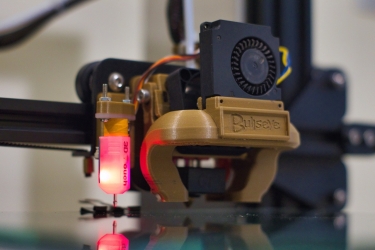3D printing has a few key benefits: it’s mostly automated, it cuts labour costs, and it is rapid in going from prototype to product. This makes it ideal for manufacturing, packaging, and automotive, but also in intricate production too, like orthotics and space.
The Current State of 3D Printing Regulations
Much like AI is currently experiencing, government regulations around the world for 3D printing are evolving to address the technology's rapid growth.
In the United States, the FDA has issued guidance for additive-manufactured medical devices, reflecting the need for rigorous testing and quality control. The U.S. also sees ongoing discussions regarding the regulation of 3D-printed firearms, a contentious issue that’s somewhat unique to the US, which balances innovation with public safety.
In Australia, the Therapeutic Goods Administration (TGA) has begun implementing rules for 3D-printed medical devices, ensuring they meet the same safety standards as traditionally manufactured products.
The balance between innovation and compliance is exemplified by firms like Formero, adhering to ethical standards in 3D printing despite infant lawmaking.
The Australian government is also exploring regulations around intellectual property rights and consumer safety in 3D printing. Given that 3D printing is being involved in construction, proper regulations haven’t even addressed these developments despite some experts predicting that 30% of homes in the outback will be 3D printed.
The Australian Consumer Law (ACL) review is looking to include 3D printing designs within the scope of product safety, because such designs are often available for public download. What if people begin printing medical devices at home for self-treatment, for example?
Lawmakers around the world are recognising the potential of 3D printing while acknowledging the necessity of regulatory frameworks to promote responsible use.
Importance of Regulations for Sustainability
Government regulations play a pivotal role in ensuring the environmental sustainability of 3D printing — after all, this is a key USP of 3D printing things (waste reduction). These regulations can enforce the use of eco-friendly materials and efficient waste management. These will not likely impact DIY printers, but their use in industry. For instance, guidelines requiring recyclable materials and reducing hazardous emissions make 3D printing more environmentally friendly, but such regulations are mostly pre-existing and not 3D printing-specific.
Balancing Innovation and Ethical Practices
To sustain innovation in 3D printing while upholding ethical practices, regulators must use common sense. Issues like intellectual property infringements and the potential misuse of printed products are complicated areas, with both trying to fit in with existing laws. And, it’s important to hold manufacturers accountable for their sustainability claims, particularly when using new technology.
Conclusion
Regulation is always one step behind technology by its very nature. This means that many businesses begin a process only for it to be restricted down the line. However, this long-term view of compliance is an important strategy, meaning that firms should uphold ethical standards that are above and beyond the current law.












































